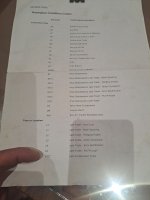Hi all!
For me, our fun, entertaining and bloody clever bunch it is not about me, my ego or being right, but as someone who not so long ago had no idea about of our tec field at all. It's for me more about learning, understanding and having fun too. If money doesn't also makes fun, it's not funny.
So I'm going to take a different approach and simply offer my thoughts on Akida and everything I've learnt so far about ANT61 the other day, without any reliable references or sources. Firstly, I don't have to be right and secondly, I think to know what I've read or learnt from other sources.
First of all, I do not know and have not found any indication of what Akida from ANT61 is installed in all things or played around with.
One thing is clear and that is very clear. The PCI board sits in this little black box called BRAIN and that in turn sits in the black box on the side of the Optimus-1 Spacecraft or what I like to call the Service Vehicle.
By the way, Chapman clarified for us under a video in the comments about this black box operating a robot screwing arm that ANT61 is already working with Akida 2.
Back to the Spacecraft, the Space Machines Company is putting that together. It's their baby that we can travel piggyback on. But it can't fly on its own. I got confused at the beginning and mistook Spacecraft for Rocket or a kind of shuttle. I know, rubbish. So our ride into space will take place in SMC's Optimus-1 and it has to be strapped piggybacked onto a rocket somehow. And this is where another rocket science begins. Not everyone can successfully launch a vehicle like Optimus-1 into space. A lot of things go through the ESA and a lot of it is controlled from my home town by the 'German Lift and Space Centre' DLR. So the first thing I did was to look for a lift into space at the ESA. And sure enough, an orange box called Beacon was launched into space from the Esrange in Kiruna. This is confirmed by the (simulated) video from ANT61. I also read a short exchange on LinkedIn between an employee in the ecosystem of presumably ESA (Faurecia).
I think the company specialised in space weather. It pointed ANT61 to a solar maximum that had to be taken into account in the calculations. I was confused. It's all rocket science to me anyway. But then I read that Beacon is probably somehow about solar sails, which are mounted on defective satellites and then pull them out of or back into orbit. I don't know exactly. Now come two important pieces of information. Only near-earth rockets are launched from Esrange. And there is an internationally binding rule, which I understand to mean that low-Earth orbit satellites are only allowed to operate 5a and must then leave orbit in a controlled manner. I assume they crash and burn in stratosphere. The sails and Beacons are supposed to help with this. That's how I understand it so far. And I mean this is a finished product that can be ordered.
The other thing is this black box Brain, which was built into the Optimus-1, which is waiting to be shot into space. It's too big for Esrange and it's not close to Earth.
It is mentioned in several places that it is supposed to be a Space X Falcon. I learnt yesterday that Musk is very successful with this cargo donkey into space. They are constantly bringing things up, such as the masses of Starlink satellites. For the first time, I looked at the launch schedule for larger rockets. That's a pace I simply hadn't expected. I browsed through all the Falcons and thought about which one might be suitable, using the Wiki list where Optimus-1 is at the beginning of March with a Falcon 9 from block five as a guide. At the same time, the Beacon has already taken off and the employee who worked in Esrange for many years was moved by the launch and the memories to Kiruna. I have no idea in which microsatellite Beacon is installed as a module. I couldn't find anything about it in the short time of researching. Look at the rocket diameters of Esrange, there is no room for Optimus-1.
Back, Optimus-1 is a bigger deal and from Australian pride. For the first time, an attempt is being made to repair a dysfunctional satellite or to make it capable of crashing as required.
I don't know how the two things are connected and whether Optimus-1 contains an orange Beacon as well as the black neuromorphic Brain box.
To summarise:
- AKD1000 PCI Board
- in the black BRAIN box from ANT61
- the box is one of many modules in the Spacecraft or Service Vehicle Optimus-1, perhaps also the orange one; the main project on Optimus is to test an optical docking system looking like a QR code so that the vessels of different nations can dock with their systems. At least that's how I understand it.
- Optimus-1 is too big for Esrange where the Beacon has just been launched into space
- most likely the Optimus-1 will be shot up with the Space X Falcon 9
- we haven't heard anything about this launch yet, at least not me
- the reference yesterday from the article and Transporter 10 is kind of the rocket name for this project, like Starlink 8-35
- Optimus-1 will be one of many objects that will be shot up with it
- as promised, we will not only see the launch via ANT61, but also the mission operation and that live
- meanwhile parallel missions are running, there is a lot to do
Over and out and just my thoughts
____
What I don't understand is that Transporter 10 says that it is a solar orbit and not an earth orbit. I find that strange.






